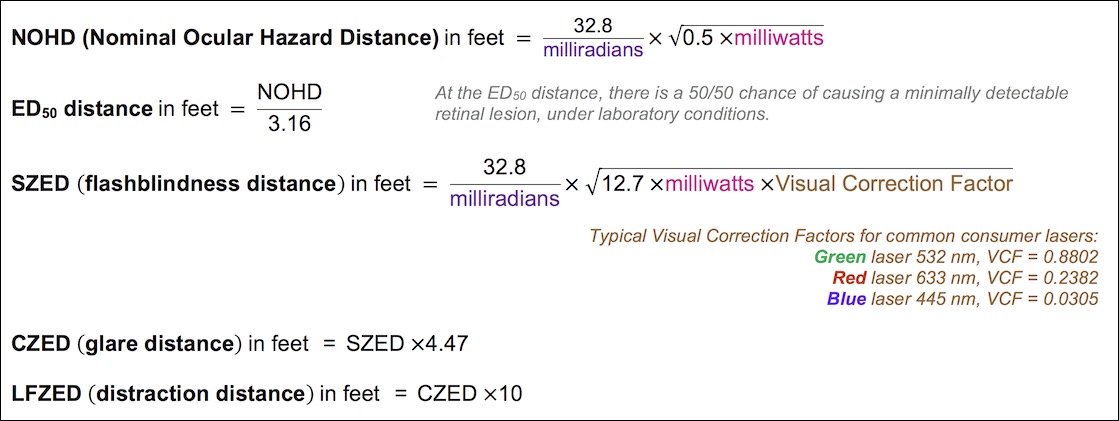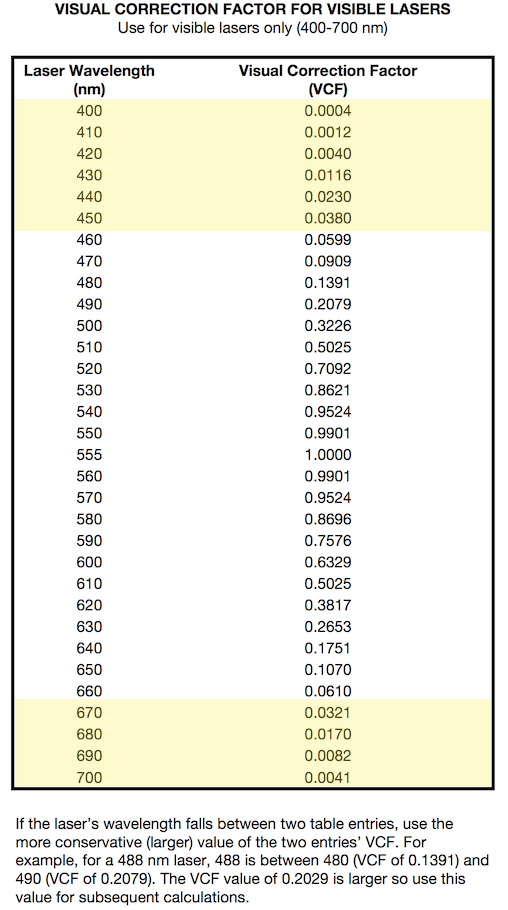Home
A comprehensive resource for safe and responsible laser use

Advice for FAA Advisory Circular AC 70-1A
The U.S. Federal Aviation Administration requests that those who use lasers outdoors fill out forms found in FAA Advisory Circular AC 70-1A. The new-as-of-2019 "1A" version is an update to the older AC 70-1 (no letter "A"), which had some errors that could be confusing. Be sure that the version you are using is "1A" or later (e.g., 1B, 1C, etc.)
Below are some tips for filling out the form found in AC 70-1A.
Simplified calculations for visible CW laser light Protection Distances, pages 12-14
If you are using continuous-wave lasers in the visible light range (generally 400 to 700 nanometers), you can use the online laser hazard distance calculator.
You can also use the simplified equations below; they give the same results as the online calculator and as FAA's more complicated instructions. These equations have been double- and triple-checked. They are correct for visible CW laser light at aviation distances of hundreds or thousands of feet.

Note: These calculations make some simplifying assumptions which are valid for continuous-wave visible lasers at aircraft distances. The SZED differs from the formula found in FAA Advisory Circular 70-1 by converting watts to milliwatts. This in turn makes the constant under the square root to be “12.7” and not the “1.27” found in Advisory Circular 70-1.
More information and examples can be found on the Laser safety calculations page.
No exponents in Table 3, page 18
Here is a version of Table 3 that has no exponents. This makes the VCF numbers easier to use — you do not have to “get the exponent right.”

Caution if the Visual Correction Factor is less than 0.0395
If the VCF is less than 0.0395 — the yellow areas marked above — then you need to double-check to see if any of the visual interference distance values (SZED, CZED or LFZED) are less than the NOHD. If they are less than the NOHD, then use the NOHD value instead.
This is to avoid cases such as a blue or red beam which appears so dim to the eye that it has a short visual interference distance, but can still be an eye hazard to a greater distance. The goal is to not allow a person to be exposed at a distance shorter than the NOHD.
Take for example a deep blue 445 nm laser. With a VCF of 0.0305, the SZED will be less than the NOHD, no matter what the power or divergence. When filling out the AC 70-1 “Laser Configuration Worksheet,” you would be required to enter “Less than NOHD” in the SZED space.